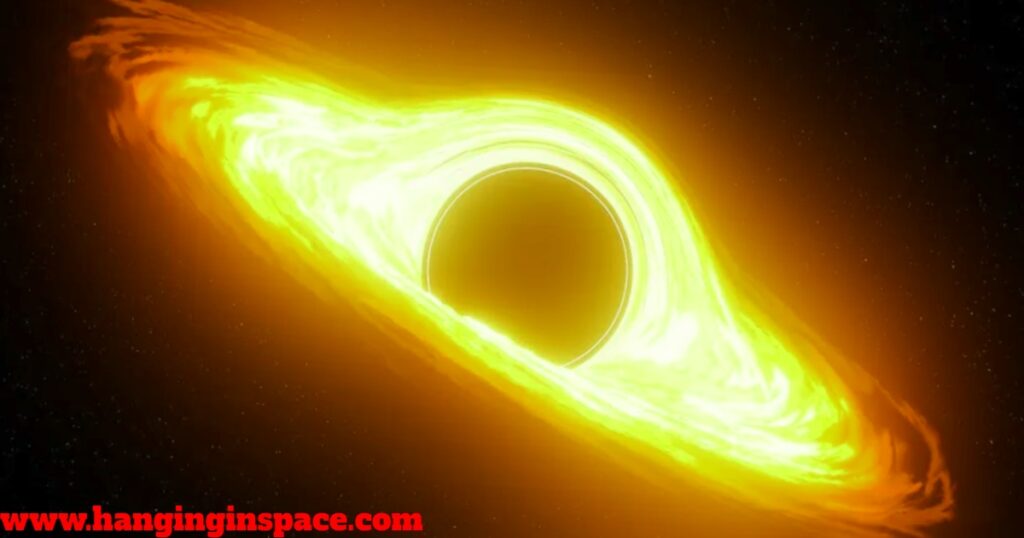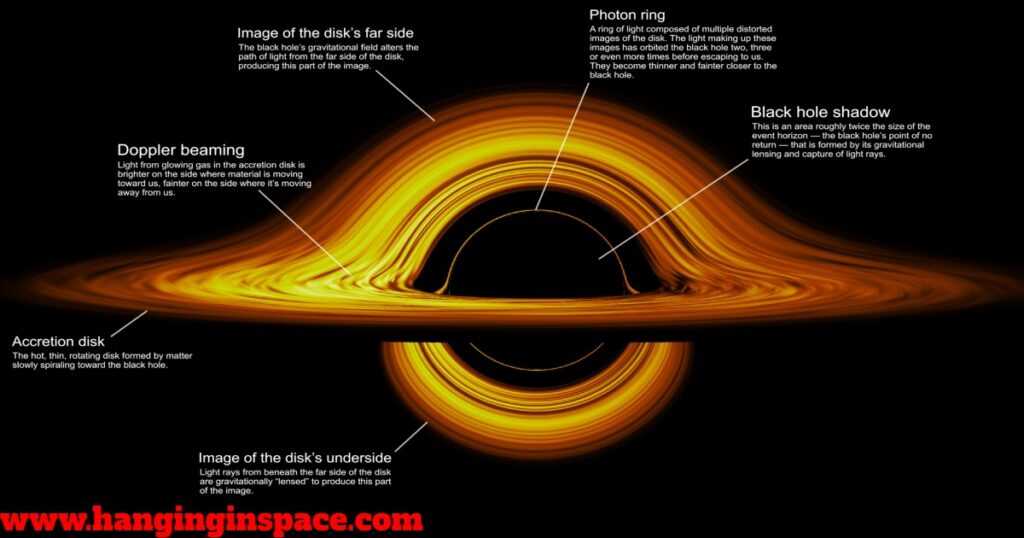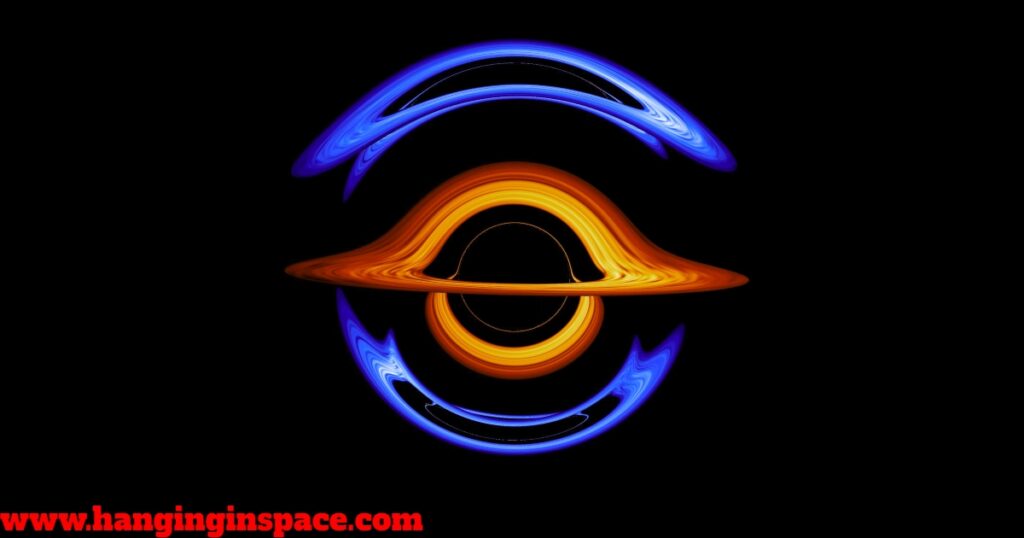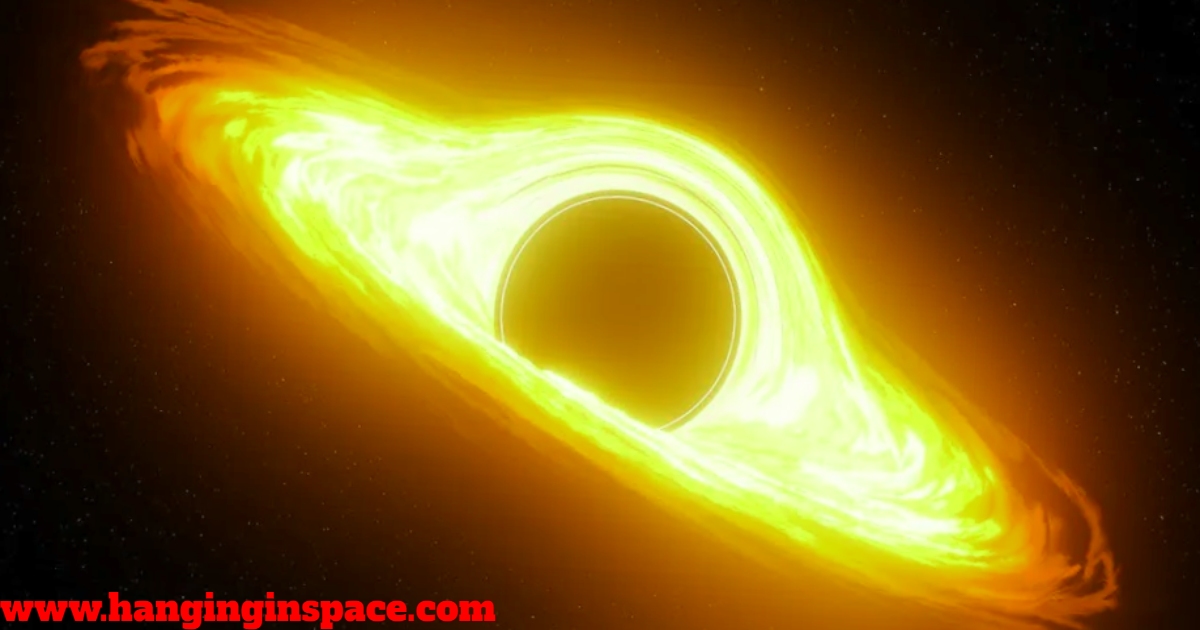Black holes are cosmic powerhouse regions of space where gravity is so strong that nothing can escape from them, not even light.

What are the Types of Black Holes?
Black holes come in various sizes, ranging from relatively small to supermassive. A black hole’s size is primarily determined by its mass. There are three main types of black holes:
Stellar Black Holes:
A supernova explosion occurs when a big star uses up all of its nuclear fuel. If the remaining core of that star is massive enough, it collapses under its own gravity to form a stellar black hole. They typically have masses ranging from a few times to several tens of times the mass of the Sun. It is the most common type of black hole.
Only the most massive stars, those with more than three solar masses, create black holes after their lifetimes. Stars with less mass develop into less compacted entities called white dwarfs or neutron stars.
Intermediate-Mass Black Holes:
The formation mechanisms of intermediate-mass black holes are still not fully understood. They may result from the merger of smaller black holes or from the direct collapse of massive gas clouds. Intermediate-mass black holes have masses ranging from hundreds to tens of thousands of times the mass of the Sun.
Supermassive or Non-Stellar Black Holes:
Supermassive black holes reside at the centers of galaxies, including our own Milky Way galaxy. They are thought to form through the rapid accretion of matter and the merging of smaller black holes, but their exact formation mechanisms remain a topic of ongoing research.
Supermassive black holes’ mass ranges from millions to billions of times the mass of the Sun. Supermassive black holes are found at the centers of quasars and galaxies.
Sagittarius A* is a supermassive black hole at the heart of our Milky Way galaxy.
What is the Structure (Anatomy) of Black Holes?
Black Hole’s Anatomy refers to the structure of a black hole.

Event Horizon:
It is the Black Hole’s surface. When anything is within a black hole, it may depart at a quicker rate than light. Therefore, anything that enters the event horizon, including light, must remain there.
Accretion Disk:
An accretion disk is the primary source of light coming from a black hole. The process by which black holes grow is referred to as accretion. Matter gradually travels inward from the disk’s outer border to its inner edge, eventually reaching the event horizon.
Event Horizon Shadow:
The event horizon traps all light that passes across it, and the deformed space-time around it redirects light via gravitational lensing. These two effects form a dark zone that astronomers call the event horizon shadow, which is nearly twice as large as the black hole’s real surface.
Photon Sphere:
Thin rings of light appear at the border of the black hole’s shadow from all angles. These rings are actually numerous, severely distorted representations of the accretion disk. The light from the disk circles the black hole several times before reaching us. Rings near the black hole get thinner and fainter.
Doppler Beaming:
From most viewpoints, one side of the accretion disk seems brighter than the other. Near the black hole, the disk spins so quickly that Einstein’s theory of relativity becomes visible. Light coming from the section of the disk spinning toward us grows brighter and bluer, while light from the opposite side of the disk rotating away from us becomes dimmer and redder.
Corona:
Strong magnetic fields threading the inner accretion disk stretch outward, forming a thin, chaotic, billion-degree cloud. Particles in the corona circle the black hole at speeds nearing light. It is a source of X-rays with substantially greater energy than those emitted by the accretion disk.
Jet:
Something weird can happen around the inner edge of any black hole’s accretion disk. A small quantity of material flowing toward the black hole may be diverted into two jets that shoot away in opposing directions. These jets shoot out particles at almost the speed of light.
Jets have been discovered in both stellar mass and supermassive black holes at galaxies’ cores.
Singularity:
Matter is crushed to an infinite density in the core of a black hole. The final destination of anything that falls on the event horizon is singularity.
Black Holes based on General Relativity Theory:
Albert Einstein’s revolutionary general relativity theory in the early 20th century conceptualized gravity not as an external force but as a curvature in spacetime caused by mass and energy.
General relativity states that under extreme conditions, an object like a star that’s collapsing under its own weight may reach a point in which its density becomes infinite and escape velocity overtakes that of light. This boundary, known as an event horizon, marks where nothing escapes the grip of black holes’ immense gravitational pull.
Black Holes’ Evidence:
Black holes, by definition, are intangible entities. But their existence can still be evidenced indirectly through the impact they have on their surroundings. Here is how scientists gather proof for black hole existence:

Death of a Star:
When a massive star runs out of fuel needed for nuclear fusion and its core collapses under its own gravity, it forms a black hole. Its intense gravity often pulls in nearby companion stars as the material is drawn towards it and disassembled by it.
It often produces large quantities of superheated gas that emits significant quantities of X-ray radiation. which provides strong evidence for the black hole’s existence. Such a phenomenon is commonly known as an “x-ray binary system.”.
Gravitational Ballet:
Black holes may appear invisible, yet their gravitational pull is immense. When colliding with another massive object, such as a star or another black hole, their gravitational interactions can create gravitational waves that ripple spacetime.
These waves can be detected using instruments such as LIGO (Laser Interferometer Gravitational-Wave Observatory), providing evidence for black hole existence.
Galactic Giants:
At the core of most galaxies lies an enormous, supermassive black hole. They exert an outsized impact on their surrounding stars and gas. Astronomers can identify one by studying stars that orbit at high velocities around a galactic center at incredible rates of speed. By this method, astronomers are often able to deduce its existence.
Examples of BlackHoles:
TON 618: Biggest Black Hole ever
Discovered in 1957 during a spectroscopic survey from the Tonantzintla Observatory in Mexico TON 618 is the largest black hole ever. TON 618 isn’t directly photographed but identified through its effect on light. TON 618, a supermassive black hole, boasts an estimated mass of 1.31274 x 10^41 kilograms (kg).
TON 618 is 41 quintillion times more massive than Earth, 66 billion times more massive than the Sun, 36,666 times more massive than our entire solar system, and 16,500 times more massive than Sagittarius A*. TON 618 resides in the constellation Ursa Major within the galaxy NGC 4051, roughly 18.2 billion light-years from Earth.
It dwarfs everything around it, including Stephenson 2-18 (a giant star, not a black hole), our Sun by over 66 billion times, and even Earth by a mind-boggling factor exceeding 41 quadrillion.
Sagittarius A*: Black Hole in our Milky Way Galaxy
Detected in the late 1960s through radio observations and photographed by EHT collaboration in 2019, Sagittarius A* (Sgr A) is a supermassive black hole, residing at the heart of our Milky Way galaxy in the constellation Sagittarius. Sagittarius A* has an estimated mass of 7.956 x 10^33 kilograms (kg), 4 million times more massive than our Sun.
While its age is likely similar to the Milky Way’s at around 13.8 billion years old. Sgr A dwarfs Earth by over 4 billion times and even outshines Stephenson 2-18 (a giant star) by a factor of about 200. Our entire solar system is puny compared to this galactic heavyweight.
Difference between Black Holes and Neutron Stars:
Black Holes Vs. Neutron Stars
| Feature | Black Holes | Neutron Stars |
|---|---|---|
| Core | Singularity: A point of infinite density and gravity where the laws of physics as we know them break down | Incredibly dense core consisting mostly of neutrons, packed together at nearly the density of an atomic nucleus |
| Gravity | So strong that not even light can escape (event horizon) | Extremely strong, but light can escape |
| Size | Varied; stellar-mass black holes are a few times the mass of the Sun, but supermassive black holes can be millions or even billions of times more massive | Typically 10-20 kilometers in diameter |
| Matter | Nothing can escape the pull of its gravity, not even light | Made of densely packed neutrons; a teaspoon of neutron star material would weigh about 1 billion tons on Earth |
| Formation | When a massive star collapses in on itself beyond a certain point (Tolman-Oppenheimer-Volkoff limit), it forms a black hole | When the core of a massive star collapses during a supernova and the remaining protons and electrons are squeezed together to form neutrons |
| Observation | Directly observing a black hole is impossible due to its light-trapping gravity. We infer their presence by the influence they exert on surrounding matter (accretion disks, stellar motions) | Observed through telescopes by detecting X-rays and gamma rays emitted from their surroundings |
| Lifespan | Theoretically can exist forever (unless encountering another black hole and merging) | Can slowly lose mass over time by emitting radiation or interacting with surrounding matter |
Conclusion:
Black holes remain amazing giants, bending spacetime with their immense gravity. While shrouded in mystery, black holes are believed to play an important role in the evolution of galaxies and may hold secrets about the very fabric of reality and the universe.
